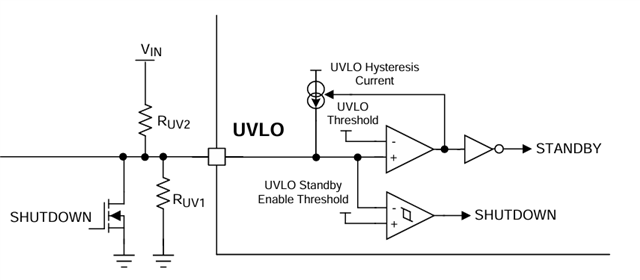Other Parts Discussed in Thread: LM5122, , LM5121
Tool/software:
Hi Team,
We are currently using the LM5122 Boost Converter in our design, we are using LM5122EVM-1PH Evaluation Kit for development purposes. Our objective is to turn the boost converter on and off using the MCU. To achieve this, we have connected an NMOS transistor to the UVLO pin. This setup allows us to pull the UVLO pin to ground when necessary. Our input voltage is 16.8V, and we have successfully boosted it to 24V. However, we are facing an issue: when we pull the UVLO pin to ground, the converter is not fully turning off. We are still observing the same input voltage at the output, even after grounding the UVLO pin. We verified the voltage at the UVLO pin and confirmed it is at 0V. Shouldn't the converter turn off completely when the UVLO is at 0V?
Could you please assist us in resolving this issue?
Thanks and Regards
Karthik P R

